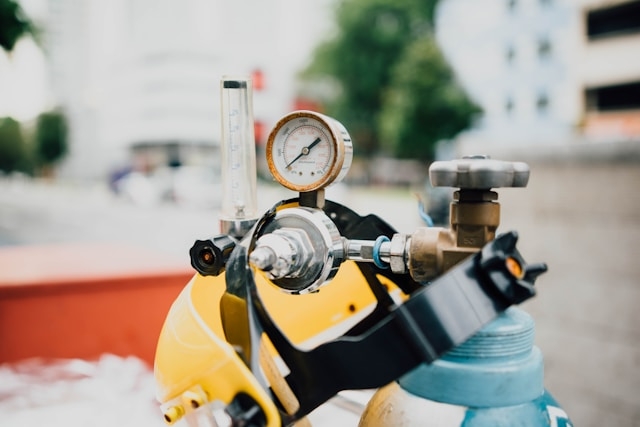Gas Regulators: High vs. Low Pressure - Key Differences Unveiled

The role of regulators is crucial when it comes to managing gas flow in various systems. High-pressure and low-pressure regulators are two essential components that serve distinct purposes. Let's delve into the world of gas regulators to understand their differences.
High-Pressure Regulator
High-pressure regulators are designed to control and reduce the high pressure of gases from storage cylinders or pipelines to a lower, more manageable pressure suitable for specific applications. They are commonly used in industrial settings where precise control over high-pressure gas flow is required.
In industrial processes such as welding, cutting, or high-pressure testing, high-pressure regulators play a vital role in ensuring the safety and efficiency of operations. By reducing the pressure of the gas to a safe and consistent level, these regulators help maintain the integrity of equipment and protect against potential hazards.
High-Pressure Regulator Example
Picture a bustling manufacturing facility where precision welding operations are in full swing. Here, high-pressure regulators take centre stage, meticulously controlling the flow of gas from cylinders at pressures as high as 3000 psi. These regulators are adept at reducing the gas pressure to a safe and manageable level of around 50 psi. By doing so, they ensure that the welding equipment receives a consistent and controlled gas flow, enabling welders to work with accuracy and efficiency.
Low-Pressure Regulator
On the other hand, low-pressure regulators reduce the pressure of gas from a high-pressure source to a lower pressure suitable for domestic or commercial applications. These regulators are commonly used in gas grills, heaters, and other appliances that require a steady and controlled flow of gas at a lower pressure.
Low-Pressure Regulator Example
Let's venture into a bustling industrial facility where a massive furnace roars to life, fueled by a network of gas lines. Nestled among the industrial equipment, a low-pressure regulator diligently adjusts the gas pressure from the main supply to meet the specific requirements of the furnace. Operating at a precise pressure level of approximately 1.0 psi, this regulator acts as a crucial intermediary, ensuring a stable and controlled gas flow to the furnace. By maintaining the correct gas pressure, the low pressure regulator enables the furnace to operate efficiently and reliably, contributing to seamless industrial processes and output consistency.
Key Differences
The primary difference between high-pressure regulators and low-pressure regulators lies in the range of pressures they are designed to handle. High-pressure regulators are built to manage and reduce extremely high pressures, whereas low-pressure regulators are tailored for lower-pressure applications.
Additionally, the internal mechanisms of high-pressure and low-pressure regulators are optimized to handle the specific pressure ranges they are intended for. High-pressure regulators are equipped with robust components to withstand intense pressures, while low-pressure regulators are designed for precision control at lower pressure levels.
- Industry
- Art
- Causes
- Crafts
- Dance
- Drinks
- Film
- Fitness
- Food
- Games
- Gardening
- Health
- Home
- Literature
- Music
- Networking
- Other
- Party
- Religion
- Shopping
- Sports
- Theater
- Wellness
- News


